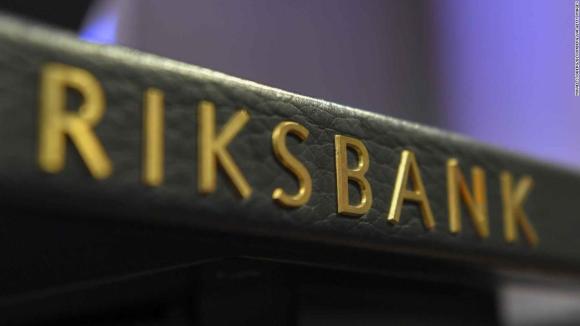
The Sveriges Riksbank
In principle, seigniorage could be defined as the share of the Riksbank’s interest income that is financed by the issuance of cash.
If the trend of declining cash demand continues and demand approaches zero, the lack of seigniorage would then raise the question of how the Riksbank should be funded in order to preserve its financial independence.
BRON: Sveriges Riksbank – Economic review 2020:2 – The Riksbank’s seigniorage and the e-krona

De oudste centrale bank ter wereld, een voorbeeld van transparantie.
Het andere werk waaruit hier werd geciteerd:
What is seigniorage?
The Riksbank ’s seigniorage is part of the Bank’s reported result and arises from the right to issue banknotes and coins. The value of all banknotes and coins in circulation is reported as a liability on the Riksbank’s balance sheet. (..) The Riksbank does not pay interest on this liability but incurs costs for managing banknotes and coins. (..)
By issuing banknotes and coins the Riksbank can finance assets of the same value, but the Riksbank has no earmarked assets that exactly correspond tot he item banknotes and coins. A standard calculation is therefore used when estimating the earnings from these assets. As the stock of banknotes and coins averaged 17,3 per cent of the balance sheet, it is assumed that 17,3 per cent of the total earnings come from the assets corresponding to banknotes and coins. (..) It is this sum that is referred to as the Riksbank’s seigniorage.
BRON: The Riksbank – Annual report 2014 (pagina 52)
Uit het zelfde jaarverslag, de volgende redenering vanwege The Riksbank, die niet enkel verduidelijkt wat seigneuriage echt betekent, maar meer nog wijst op de keuzemogelijkheden in de aanwending van de verschillende financieringsbronnen waar een centrale bank kan over beschikken:

De synthese van de standpunten van The Sveriges Riksbank:
Zonder het verkregen emissiemonopolie van bankbiljetten zou The Riksbank voor het volledige bedrag van de omloop werkmiddelen verliezen waarover zij geen rente verschuldigd is,
De centrale bank heeft dan de vrije keuze: (1) het zelfde bedrag aan investeringen aanhouden, doch deze financieren via een bijkomend bedrag aan centrale bankreserves en deposito’s van commerciële banken. Financieringsmiddelen waarover zij dan wel een interestvergoeding betaalt, of (2) deze investeringen niet meer doen, waardoor de interestontvangsten lager zouden uitkomen.
Op de grafische voorstelling wordt duidelijk in beeld gebracht wat de seigneuriage inhoudt, en hoe ze wordt berekend:
de opbrengsten van een bedrag activa = de bankbiljettenomloop (twee blauwe schijven van de cilinders), verminderd met de kosten van de bankbiljettenomloop.